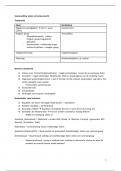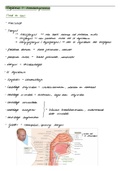Samenvatting
Further Information on Equity Summary Notes- Equity and Trusts
- Vak
- Instelling
- Boek
These are notes on equity created in 2019. They follow a structured format which condenses the relevant case law, statutory provisions and academic opinion that are relevant to the topic to aid with exam revision.
[Meer zien]













